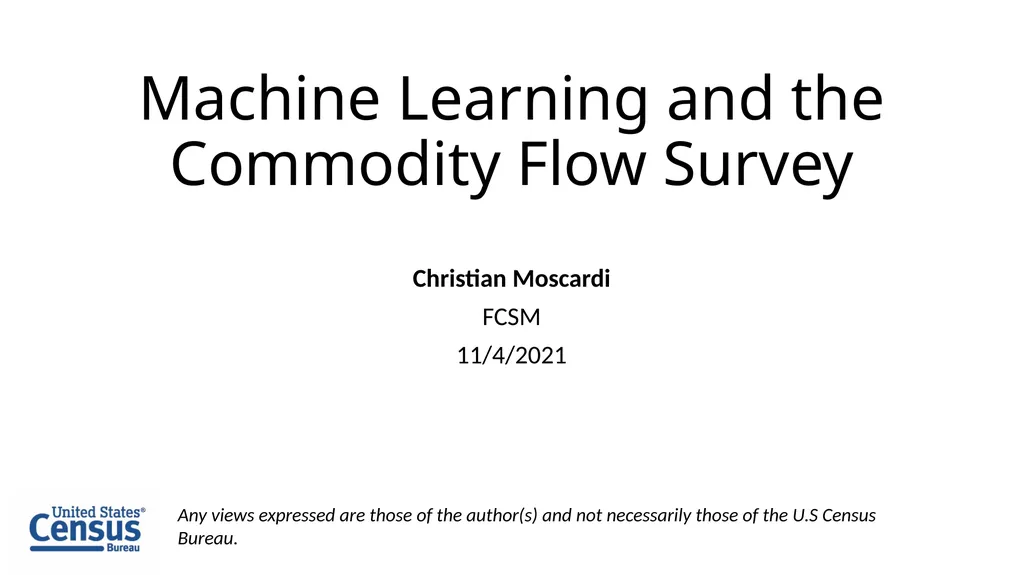
Author : alida-meadow | Published Date : 2025-05-16
Description: Machine Learning and the Commodity Flow Survey Christian Moscardi FCSM 1142021 Any views expressed are those of the author(s) and not necessarily those of the U.S Census Bureau. 2 Overview Commodity Flow Survey (CFS) Sponsored by U.S. DOTDownload Presentation The PPT/PDF document "" is the property of its rightful owner. Permission is granted to download and print the materials on this website for personal, non-commercial use only, and to display it on your personal computer provided you do not modify the materials and that you retain all copyright notices contained in the materials. By downloading content from our website, you accept the terms of this agreement.
Here is the link to download the presentation.
"Machine Learning and the Commodity Flow Survey"The content belongs to its owner. You may download and print it for personal use, without modification, and keep all copyright notices. By downloading, you agree to these terms.













